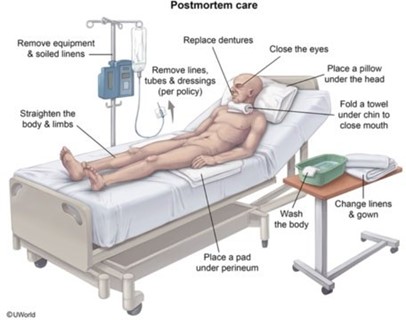A nurse is reinforcing teaching with a group of expectant parents regarding the proper use of a car seat. Which of the following statements by a parent indicates an understanding of the teaching?
"I will secure the seatbelt across my newborn's lap."
"I can move my child to a booster seat when she weighs 20 pounds."
"I will turn the car seat forward-facing when my child is 10 months old."
"I can place a rolled towel on each side of my newborn's head until he can hold his head up."
The Correct Answer is D
The statement by the parent that they can place a rolled towel on each side of their newborn's head until he can hold his head up indicates an understanding of the teaching. This is a safe and appropriate way to provide support for the newborn's head while in a car seat.
a) Securing the seatbelt across the newborn's lap is not safe. The seatbelt should be positioned across the newborn's chest and over their hips.
b) Moving a child to a booster seat when they weigh 20 pounds is not safe. Children should remain in a rear-facing car seat until they are at least 2 years old or until they reach the highest weight or height allowed by the car seat's manufacturer.
c) Turning the car seat forward-facing when the child is 10 months old is not safe. Children should remain in a rear-facing car seat until they are at least 2 years old or until they reach the highest weight or height allowed by the car seat's manufacturer.
Nursing Test Bank
Naxlex Comprehensive Predictor Exams
Related Questions
Correct Answer is A
Explanation
After a patient dies, postmortem care includes preparing them for family viewing. The nurse should place the body in the supine position, with the arms at the sides and the head on a pillow. Then elevate the head of the bed 30 degrees to prevent discoloration from blood settling in the face .
The other options are not correct because:
b) The nurse should cleanse the client's body while wearing appropriate personal protective equipment (PPE) based on indications for isolation precautions, not necessarily sterile gloves.
c) If the patient wore dentures and your facility’s policy permits, gently insert them; then close the mouth
d) The nurse should close the eyes by gently pressing on the lids with their fingertips. If they don’t stay closed, place moist coton balls on the eyelids for a few minutes, and then try again to close them. Surgical tape is not mentioned as necessary .

Correct Answer is C
Explanation
Answer: C
Rationale:
A) Apply a topical corticosteroid ointment to the scalp: Corticosteroids are not indicated for the treatment of Pediculosis capitis (head lice). The treatment focuses on eliminating the lice and nits, typically through pediculicide medications like permethrin or ivermectin. Corticosteroids are used to reduce inflammation and itching, but they do not kill the lice or their eggs.
B) Soak hair brushes and combs in soapy water: Soaking hair brushes and combs in soapy water alone is not sufficient to kill lice. Items such as hair brushes should be soaked in hot water (130°F or higher) for at least 5-10 minutes to ensure any lice or nits present are killed. This is a critical step to prevent reinfestation.
C) Wash the bed linens in hot water: Washing bed linens in hot water (130°F or higher) is essential to eliminate lice and nits that may have transferred onto bedding. This prevents the spread and recurrence of lice. Items that cannot be washed should be sealed in a plastic bag for 2 weeks to kill the lice.
D) Clean the child's toys with a 1:10 bleach solution: Lice are spread through direct contact and cannot live on inanimate objects for long periods. Cleaning toys with bleach is unnecessary for lice removal and can be harmful to the toys or the child if not properly rinsed.

Whether you are a student looking to ace your exams or a practicing nurse seeking to enhance your expertise , our nursing education contents will empower you with the confidence and competence to make a difference in the lives of patients and become a respected leader in the healthcare field.
Visit Naxlex, invest in your future and unlock endless possibilities with our unparalleled nursing education contents today
Report Wrong Answer on the Current Question
Do you disagree with the answer? If yes, what is your expected answer? Explain.
Kindly be descriptive with the issue you are facing.
